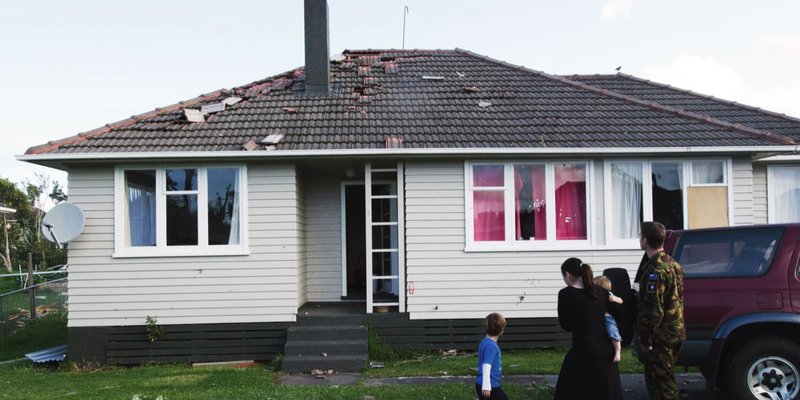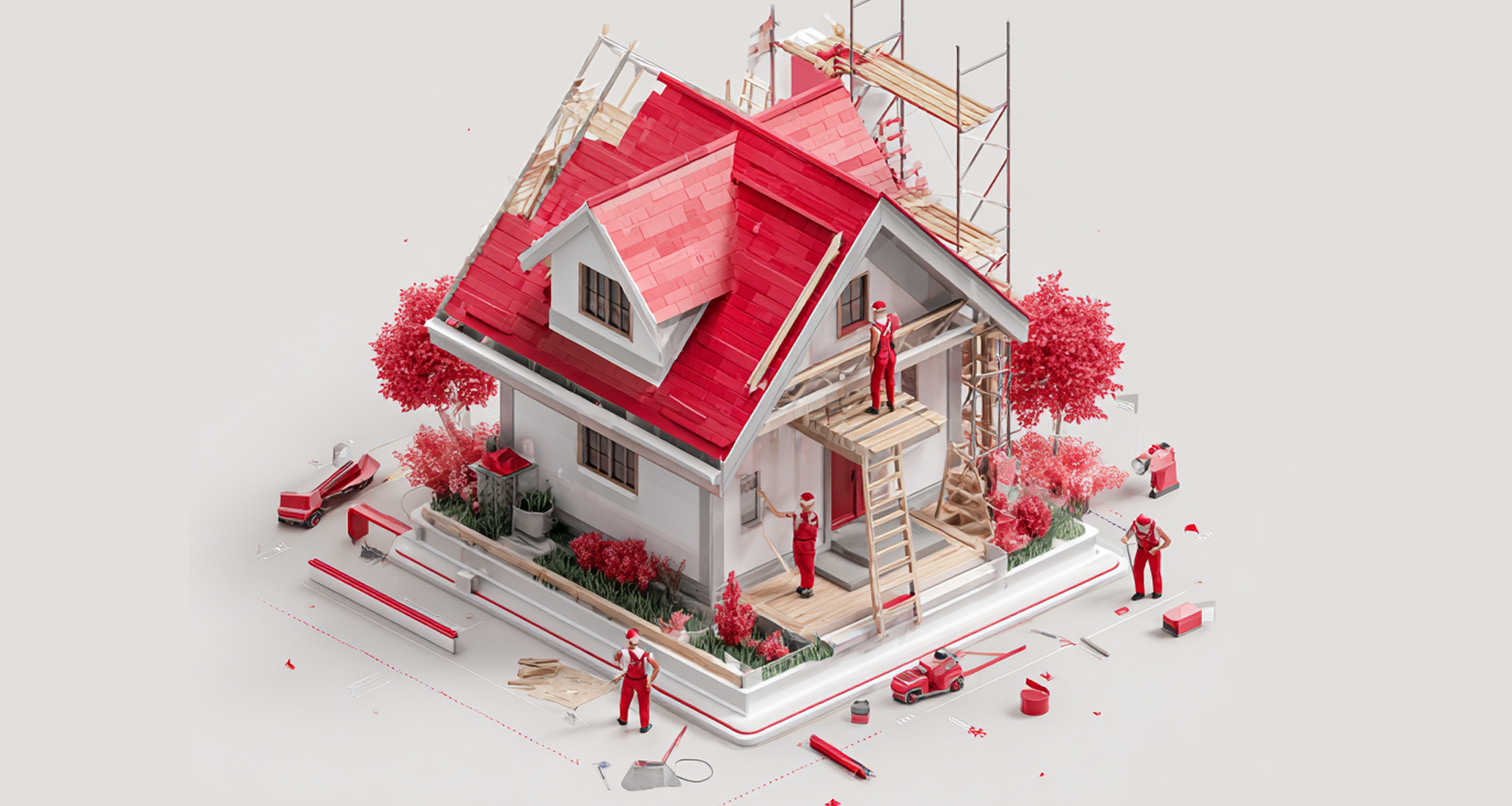
If you are not redirected within 30 seconds, please click here to continue.
Samedi: 10h – 16h HAE

If you are not redirected within 30 seconds, please click here to continue.
If you are not redirected within 30 seconds, please click here to continue.
How to Protect Your Home from Extreme Winds and Tornadoes

Even Dorothy and Toto may not realize that Canada is second only to the U.S. when it comes to experiencing the highest number of tornadoes in the world. This storm activity and other weather-induced catastrophic events are on the rise, which means there may be work to do on your home to protect it as well as your home insurance premium.
The provinces of Ontario and Alberta have been particularly touched by wind-related damage, with the latter recently being dubbed as the “epicentre of catastrophic claims” in a recent insurance industry report. In addition, the east coast of Canada often suffers from severe weather as hurricanes further south taper off into tropical storms that can pack a significant wallop.
Severe weather events – whether extreme winds or floods – can potentially affect all Canadians, so it’s in everyone’s best interest to reduce their exposure to wind-related damage and understand what it means for their insurance coverage.
Tornadoes are not just in Kansas
Tornadoes and extreme windstorms are becoming increasingly common in many parts of Canada.
In just one day in August, at least two tornadoes touched down in Alberta. By mid-July, Environment Canada estimated the province had seen at least 10 twisters so far this year.
Meanwhile, in southern and eastern Ontario, Environment Canada believes three tornadoes touched down in one day in August, with warnings issued for the Ottawa area and even the heart of Toronto. Houses and businesses are still being rebuilt after two tornadoes ripped through the Ottawa-Gatineau region in late September 2018, causing massive damage to the Dunrobin and Greenbank neighbourhoods in Ottawa, as well as the Mont-Bleu area in Gatineau.
While tornado watches often don’t lead to funnels hitting the ground, the extreme winds alone are enough to break branches and even fell trees that lead to crushed cars, flattened backyard storage sheds, and a lot of missing shingles. In 2018, the financial tally for the catastrophic losses was approximately $2 billion, according to the Insurance Bureau of Canada’s 2019 Facts of the Property and Casualty Insurance Industry in Canada. The report also found that “over half of these losses (56%) were caused by wind, tornado and hurricane events, while from 2009 to 2017, the average amount of damage caused by these types of events accounted for less than a quarter of catastrophic losses (20%).”
These shifting winds mean Canadians must get used to more tornado watches and warnings, and windier weather that’s more likely to cause damage to their homes and property.
Don't waste time calling around for home insurance
Use Rates.ca to shop around and compare multiple quotes at the same time.
Finding the best home insurance coverage has never been so easy!
Keep a lid on it
The frequent recipient of damage caused by high winds is the roof of your home. It’s not just that shingles get blown off, but vents can also fail, allowing wind, rainwater and debris to get inside and even injure occupants.
You can be proactive by inspecting your roof to see if it needs any repairs, and if it’s time for a new roof, don’t postpone the work. Rather, see if it’s possible to upgrade your roof with wind-rated shingles and ridge vents. And it’s not just the shingles you need to worry about; it’s any vents or other entry points into the home, such as a skylight, as well as anything attached such as your eavestroughs. It’s also worthwhile to ensure you have an up-to-date home inventory list detailing all of your possessions.
If you have coverings for your patio or a carport, you should inspect them to ensure they can withstand structural damage from a windstorm. If you a full garage, be sure the door is pressure and impact-rated with heavy-duty deadbolt and slide bolts at both the top and bottom. Similarly, you need to protect windows and glass doors from flying debris with storm shutters that protect against airborne shingles, metal siding, tree branches and even signposts.
Other flying threats include outdoor objects such as garbage cans, lawn furniture and ornaments, and anything sitting on the patio or porch such as tables and umbrella. Even a barbecue or air conditioning unit can become relatively light if the wind is strong enough, so make sure they are fully secured where they are or can be moved inside if necessary.
You may decide to move unsecured items into a storage shed or other separate building on your property. But just like your house, these extra buildings must also be fully prepared for extreme winds — the same checklist applies to any outbuildings such as workshops, pool houses and sheds. And don’t forget tree forts or play apparatuses.
Finally, naturally occurring structures can be a potential hazard. An old-growth tree may look sturdy, but dead branches are particularly prone to snapping off in high winds. You should trim and maintain any trees and shrubs on your property and pick up any debris that could get swept up and become a flying hazard.
Get a second opinion
While some risks are obvious to any homeowner, it makes sense to get a professional to evaluate your home and property so you can fully understand what damage a tornado or severe windstorm could cause.
A building inspector can help evaluate your home’s capacity to withstand storm-force winds. If they’ve worked in the community a while, they’ll have insights into the weather patterns affecting the community and the common problems homeowners have faced because of the local weather over the years. Your municipality is also a great resource, especially if your city or town is located in a severe wind region — government websites, utilities, and the local building department all have collected information on how homes in your area can be protected.
Most of all, you should speak to your insurance provider before you encounter an extreme weather event, not after it happens.
Get the right advice
Never assume the damage from a tornado or severe windstorm is covered under your insurance policy. If you’ve moved into a region that has a reputation for extreme weather or you’ve noticed an uptick in wind activity that could cause damage to your property, you need to verify what types of damage are covered under your policy.
Insurers track the common sources of damage in your community, including flood, storm and high-wind activity. If you live in tornado alley, it will be reflected in your insurance premiums.
Homeowner insurance policies generally cover wind damage, including the structure of the building and contents due to broken windows and debris. Your coverage should encompass the cost of rebuilding your home completely or in part, as well as replacing your belongings and any cleaning costs. It should also have “additional living expense” coverage to pay the costs of living away from home if it’s damaged, such as hotel bills, food and dining costs, and other living expenses until you can move back in.
Not everything is covered when a windstorm hits. If a fence falls, it is covered, but only the portion of the fence you’re responsible for, subject to your policy deductible. Your neighbour is responsible for their share, and insurance only covers the damaged parts, not the entire fence. And when it comes to trees, it’s not the tree that’s insured, it’s the property that’s damaged. You may have to pay for the removal of the tree debris off your property, even if it’s your neighbour’s tree. However, some insurers include coverage for outdoor trees, shrubs, plants and lawns.
As a homeowner, it’s up to you to take as many preventative measures as possible to minimize damage from a severe windstorm, and verify you have the right home insurance coverage that reflects your risk.
Get money-saving tips in your inbox.
Stay on top of personal finance tips from our money experts!










